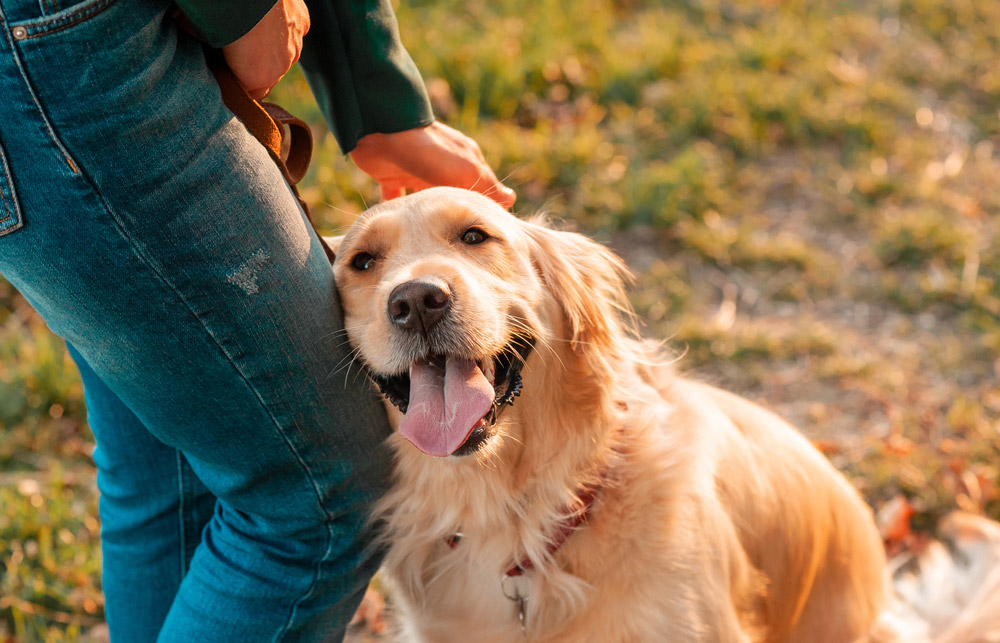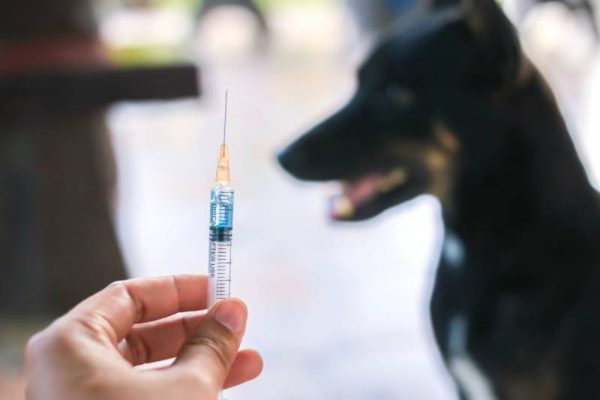When you go away, you trust your dog sitter to take care of one of your most precious family members. To some people, it might sound like an exaggeration, but to most dog owners, it’s not. But when your pet sitter stops by for the day or stays the night while you’re away, what are they really doing? It’s going to be up to you to verify what your dog sitter does during your leave of absence, but once you have a better understanding of what many dog sitters do, you can ask all the right questions to get the clarification you need!

The 12 Things Dog Sitters Do While You’re Away
1. Give Them Food and Water
This is the absolute bare minimum a pet sitter should do, and if you suspect they’re not doing this per your exact instructions, it’s time to find a new pet sitter. Even if your dog already has water, they should give them fresh water to drink daily.
It’s also common for a dog to not eat for a little bit because of the stress while you’re away, but your pet sitter should be able to monitor this and ensure there’s enough food in their bowl. This doesn’t mean filling it to the top every time if your dog is an overeater, but they should meet their daily caloric needs.
2. Walk Them
While this isn’t part of every dog sitter’s tasks, we think it should be. Verify with your pet sitter if they will take your pup for a walk while watching them. If they do, ensure they have everything they need to do so safely. At the very least, you should provide the harness, collar, and leash, but even providing poop bags is a good idea.

3. Spend the Night
Whether your dog sitter will do this depends on what you’re paying. Having a pet sitter that will spend the night with your pooch will cost significantly more than having one that stops by twice a day for an hour. It’s a bigger time commitment, and your dog will enjoy their company, but you also have to be able to fit it into your budget.
4. Communicate With You
This is another essential part of being a pet sitter, and some pet sitters are better at communicating with you than others. We firmly believe that a pet sitter should check in with you after every visit, even if it’s just sending a message with a photo letting you know that everything is OK. They’re already there completing their work, so there’s no reason they can’t provide you with a bit of peace of mind by shooting you a message with a photo of your pup! However, be sure to make your expectations clear, regardless of whether you want constant updates or a quick text every other day.

5. Enforce Rules
If you let your pet sitter know what your dog should and shouldn’t do, they should enforce those rules while they are there. You’ll need to set realistic expectations with this though, as your pet sitter isn’t going to train your dog for you.
You’ll also need to cut your pet sitter a little slack because, often, your pup won’t listen to them as well as they listen to you.
6. Keep Them Safe
It’s a core tenant of being a dog sitter, and while they can’t prevent everything that you might be able to, they should take some basic precautions to try and keep your dog safe. If they see a potentially dangerous situation, they need to correct it.
Things can always happen when they’re not there, but when they are, they should be doing everything they can to keep your furry friend safe.

7. Double-Check Your Home
When they come in and leave, your pet sitter should go around your home to ensure that all the appliances are off and there aren’t any faucets running. A quick run-through of your house ensures your dog didn’t create a potentially dangerous situation they could easily fix.
While a dog sitter won’t always catch everything, they should at least do a quick walkthrough to give you a little extra peace of mind. Again, make sure you make these expectations clear.
8. Clean Up Animal Messes
Even if your dog doesn’t usually make messes, when you go away for a longer period of time, it wouldn’t be out of the ordinary, especially since they’re likely bored. It’s part of a dog sitter’s job to clean up messes your animal makes while you’re out.
However, this should be within reason. They’re only going to clean up messes directly related to what your dog did, and even then, if they turned your entire home into a disaster area, they might need to charge you more to take care of it.
If you're looking for an all-in-one, pet-friendly, enzyme cleaner, we highly recommend the Hepper Advanced Bio-Enzyme Pet Stain & Odor Eliminator Spray.
- ADVANCED ENZYMATIC CLEANER - Penetrates the most stubborn smells and stains at the deepest molecular...
- FOR ANY MESS, ON ANY SURFACE - This pet odor eliminator cleans your carpets, floors, furniture,...
- FRESH, NATURAL ODOR - Our unique formulation doesn't rely on dangerous or unpleasant chemical...
It eliminates tough stains and odors easily and is excellent for accident prevention. Plus, it comes with a 100% satisfaction guarantee! Click here to order now.
At Dogster, we’ve admired Hepper for many years, and decided to take a controlling ownership interest so that we could benefit from the outstanding products of this cool pet company!
9. Lock Up
When your dog sitter leaves your home, they should leave it just as secure as they found it. This means locking your doors and windows when they leave so no one can break in. It doesn’t matter that you have a dog there; your pet sitter shouldn’t assume that your dog is enough of a deterrent for would-be thieves.
10. Play With Your Dog
Checking in on your dog is about more than meeting their necessities; it’s also about giving them some attention and love while you’re away. If they’re staying at your home, they should make time several times throughout the day to play with them, and if they’re just stopping by, they should dedicate all their attention to them.
This shouldn’t be something you have to pay extra for, but if you’re booking by the amount of time you want them to stop by, it’s normal for them to charge more for longer stays.

11. Give Medications
If your dog needs medication, you need to communicate this with your pet sitter and let them know before you leave. Not only does this ensure your dog gets the medication they need while you’re away, but it also ensures your dog sitter is comfortable giving it to them.
Ensure they have all the information they need and that they’re able and willing to give them the medication. For simple medications, there usually won’t be any charge for this, but for more complex medications, they might charge a little more.
12. Other Miscellaneous Tasks
You should not assume your dog sitter will do whatever task you ask. However, if you’d like something done, there’s nothing wrong with asking. There are just a few things you need to keep in mind. First, you need to keep it simple with tasks like bringing in the mail or opening and closing the blinds or shutters when they come in.
Second, if you’re asking for more than one or two things, or if it’s a more time-consuming task you’re asking for, be ready to offer them a little something extra for it. It doesn’t need to be a lot, but even throwing in an additional $5 a day can make all the difference!


Conclusion
Now that you know what a dog sitter should do, it’s up to you to ensure your dog sitter is actually doing it! There’s nothing wrong with setting up a nanny cam in your home, but we recommend letting your pet sitter know it’s there so you’re not recording them without their permission or knowledge.
From there, ensure they are meeting your basic expectations, as your pup will appreciate the extra work and questions when they are getting the care they need.
Finally, you need to make sure you are making all of your expectations clear with your sitter before you leave and that they agree.
Related Reads:
- Irish Red and White Setter: Info, Pictures, Facts & Traits
- My Dog Only Has One Testicle: Is It a Problem? Our Vet Answers
Featured Image Credit: New Africa, Shutterstock




















